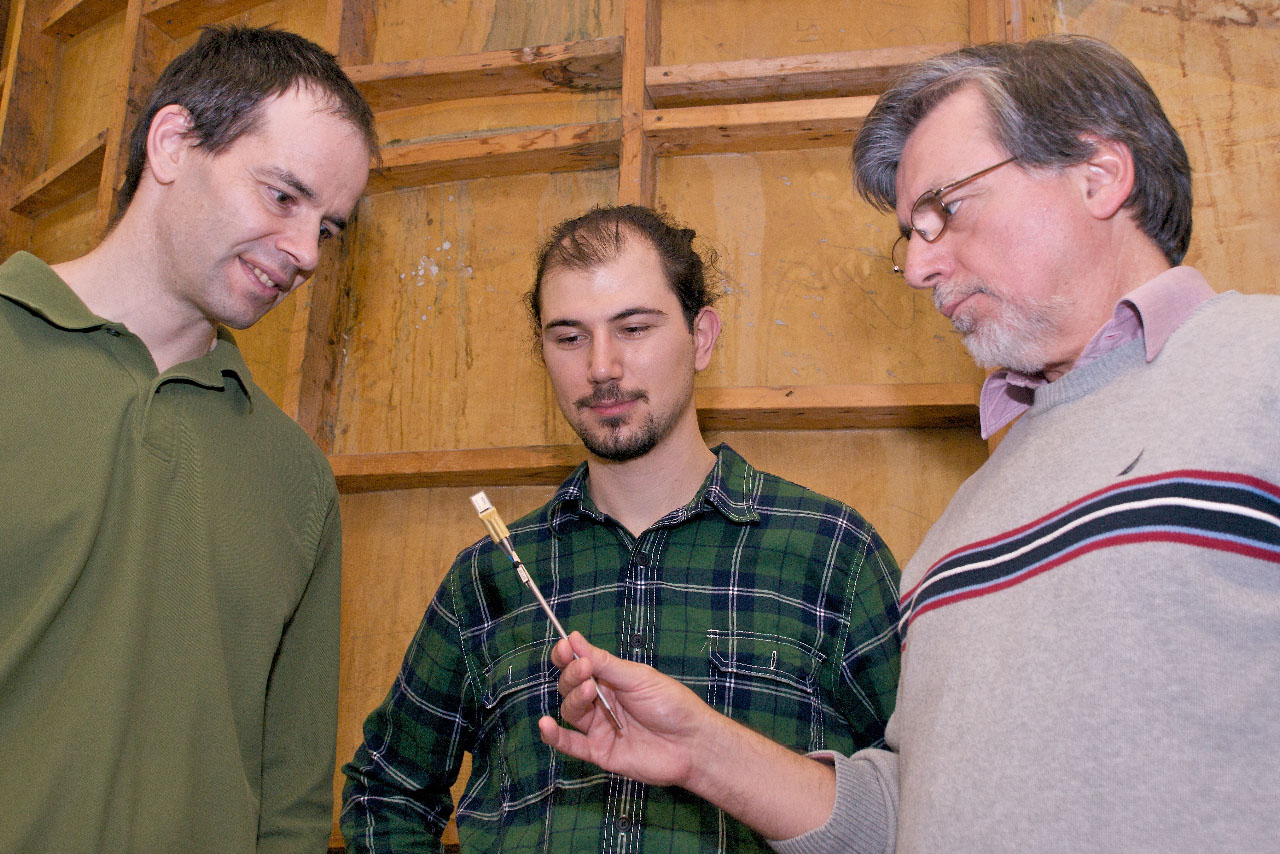Piezoelectric materials are crystalline substances that produce tiny amounts of electricity when subjected to pressure. They are commonly used to ignite gas stoves and outdoor grills. A team of mechanical engineers in The Grove School of Engineering at The City College of New York (CCNY) has developed a method for using these materials to generate green auxiliary power for automobiles and other vehicles.
In a wind tunnel, graduate student Dóĝus Akaydin created a vortex by passing air over a cylinder set at a 90 degree angle to the airflow. This vortex caused a thin, piezoelectric strip that was attached to a rod and two lead wires and placed perpendicular to the cylinder to vibrate and produce voltage, explained Dr. Yiannis Andreopoulos, Professor of Mechanical Engineering and Mr. Akaydin’s co-advisor.
Professor Andreopoulos, his colleague, Dr. Niell Elvin, and Mr. Akaydin presented their findings at the American Physical Society meeting held last month in Minneapolis. Their work was singled out of 1,600 entries for press release to the general public.
At maximum output, the device generates 20 – 30 volts. However, it produces a current so small that it can only be measured in milliamperes. Future research will investigate ways to scale up the amperage, Professor Andreopoulos said.
“We’re trying to understand how this phenomenon works and how the material interacts with the air flow,” he explained. “We want to see what happens if you change the air flow, the size of device, the wind velocity and location. All need to be determined before you can produce a commercial product.”
While piezoelectric strips cannot match windmills for energy output, they produce less noise and vibration and require less maintenance, Professor Andreopoulos noted. He hopes to produce a device that could be placed on a car and used to power the lights or radio while reducing fossil fuel consumption. Sheets of piezoelectric material could also be placed atop buildings. Another application is for powering sensors placed in remote locations where electricity supply is not available.
The initial research was funded by the Michael Pope Fund for Energy Research. Professors Andreopoulos and Elvin plan to pursue federal grants to continue the work of optimizing the device’s efficiency and improving its design.
MEDIA CONTACT
Ellis Simon
p: 212.650.6460
e:
esim%6fn@ccny.cun
%79.ed%75" rel="nofollow">
esimon@ccny.cuny.edu